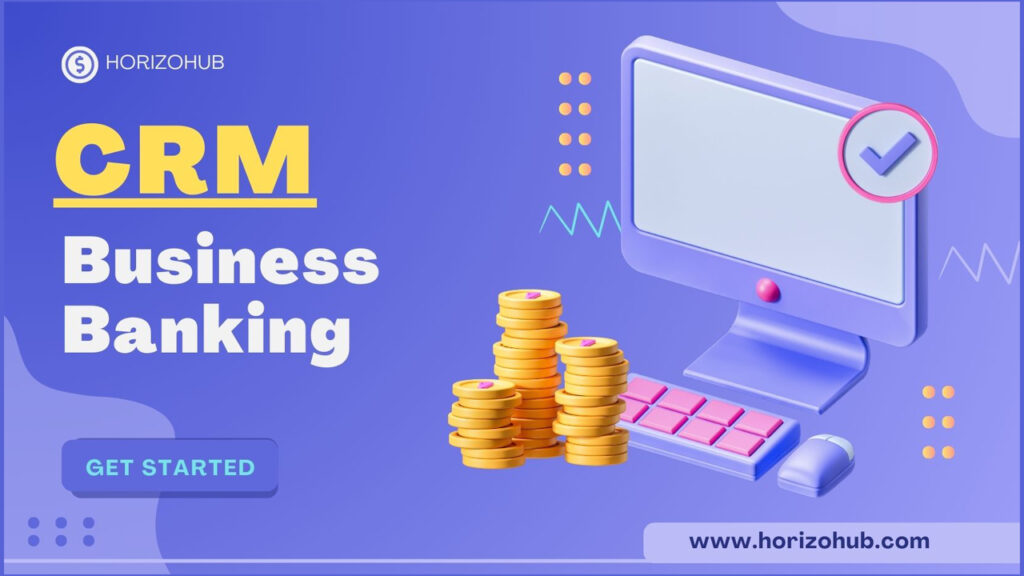Introduction
CRM software has emerged as one of the most useful applications that enable companies in various industries to manage customer interactions and enhance the customer relationships. Selecting the right CRM for business banks and other financial institutions can give relevant features to enhance customer experience, operation, sales and many features.
This is why customer relationship management (CRM) software is now a crucial tool in the SLA management of business relations in interaction with customers across industries.
Key Takeaways
- CRM can assist the banks in identifying new small business customers and more effectively engaging with those that are already affiliated with the institution
- It makes cross selling and up selling possible via identifying the right product
- CRM helps in improving on the overall marketing with the right marketing, promotions that suit the specific needs of segments
- Enables enhanced customer service experiences since the organization will get back to the customers faster and present tailored interactions
- It gives the staff of the banks a consolidated picture of the customers so that they are able to forge relationships and anticipate needs
- Analytics provide details as to how their customers will behave in the future and how to retain them long-term
- CRM enables harmonized and integrated cooperation of various sections of the bank to provide homogenous delightful communications
For business banking especially, CRM offers strategic benefits through consolidating client information, enabling constructive inter department sharing and offering ways to tailor services.
Here Are 14 Benefits of CRM for Business Banking
Customer relation management (CRM) is now one of the critical tools that every firm and company across all industries needs to have if it has to enhance the way it deals with its customers and improve its profitability. This is even more the case in the context of business banking competition where the competing players are numerous and well-established
1. The Case of Single Source of Truth on Clients
A CRM replaces numerous databases and files where client information can be stored with a single database that is a CRM where all critical information is stored centrally and not on numerous spreadsheets, emails, computers, or in files.
This way, all the information is consolidated in one safe platform that everyone in the company can access: Hence, everyone is on the same page. This allows crucial information not to go unnoticed and unattended to.
Here are few points to remember:
- Superb database for storing all the information relating to the clients
- Brings together information generated from different databases.
- Allows the management of all the data relating to the clients in the company.
- Helps to align everyone and avoid confusion.
- Avoids a situation where critical information slips through the radar
2. Altogether, complete and comprehensive Client Dossiers and their history
As everything is being compiled in one interface, the teams obtain comprehensive individual overviews of the clients including contact information, history, interactions, onboarding progress, and services issues, and others. There is no way that everyone can make sense and tell the general narrative for your relationships.
Here are few points to remember:
- This allows all the information about a client to be compiled within one single interface.
- Offers comprehensive analyses of every client
- All the contact details of the customer including his/her history and any previous or subsequent interactions with him/her, etc.
- It can be useful in comprehending the nature of the client interactions.
3. Improved Collaboration Between Departments
Hierarchical walls between primary banking teams, operational, technical, product development, sales and marketing, legal, and managerial are removed. Since all the client data is kept at a central place and accessible to all organizational departments, it makes it easy for all these departments to work together and provide the best and integrated services.
Here are few points to remember:
- Centralized data reduces information proliferation across departmental boundaries
- Facilitating cross organizational collaboration
- Provides opportunity to offer services to the clients in a coordinated manor
4. Improved Dealing and Interacting with Clients
This way, personnel is more focused and can give better service since the clients’ profiles and histories are accessible in an instant. It also has contextual information about matters such as issues, previous discussions, product experience, objectives, challenges, and so on. While this can lead to improved functionality and convenience, it results in superior human relations.
Here are few points to remember:
- Easy access to all the information about the client and his/her previous interactions with the service.
- It is more concentrated and provides better service.
- It is about establishing and maintaining those important working relationship with the clients
5. Automated Onboarding and Requests

The tasks of the client onboarding or any typical request are performed in a faster manner and the forms, the templates, and the workflows are already integrated in a CRM. It also saves time in attending to the needs of client and or the institution as a whole. It cuts out tedious data entry and inefficient processes that involve a lot of paperwork.
Here are few points to remember:
- Reduced time and increased coordination of client identification and verification
- Cuts time on client inquiry
- Eliminates tedious paperwork
6. Compliance and Security Functions
Most contemporary CRMs have compliance capabilities including data access, record of activity, audit trail, records retention, permissions and various reports. Client details are also protected through proper security measures to ensure that their information is safe.
Here are few points to remember:
- Information access restrictions
- Electronic trails for the monitoring of data
- Robust security measures
7. Client Communications Tracking
All communicative interactions including e-mail, phone calls, face-to-face meetings, files, notes, tasks, and events with contacts are instantly recorded in their profiles for future use. This also allows teams to scroll back in history in order to recall the last time that the specific client was dealt with for better continuity.
Here are few points to remember:
- Records all contact with customers
- It facilitates efficient search of the records of the particular client.
- Improves continuity
8. Task and Activity Management
It allows for work sharing and coupled with the use of tasks, calendars and notifications, they are ideal for enhancing collaboration on the most important items relating to the clients, deadlines, meetings and follow-up actions. This helps avoid the situation where the ball is dropped on important items through the myriads of daily tasks and activities.
Here are few points to remember:
- This means that the centralization of work and activities will be emphasized.
- Calendar, events, notifications
- In the following cases, there are coordinated efforts on what the client is to do.
- Avoid dropped tasks
9. Marketing Automation Execution

Emails, Ads, landing pages and nurture tracks are easily created and managed by a CRM that also has marketing automation as a key feature of its constitution. They can help in providing specific messages and content to the correct prospects and clients.
Here are few points to remember:
- Automates marketing tasks
- To prospects, he offers dynamic content.
- Improves targeting
10. Contact List Segmentation
The list and data can be updated dynamically and can be created and managed based on several criteria such as size of the client, industry, products that the client is banking on, the account manager, geographical location or any other factor. This means that the outreach and interactions are relevant and appropriate, as they are centered around specific needs.
Here are few points to remember:
- Flexible, active and changeable contact lists
- Segment by more specific characteristics
- Ensures relevant outreach
11. Sales Pipeline Visibility
For managing leads and deals and sales opportunities by pipeline stages, by stage, certainty, revenue anticipated etc, by client, banker, product etc, a CRM offers live funnel reports and forecast & this data leads to better resource management and planning.
Here are few points to remember:
- In addition, it combines real-time sales funnel reporting with dynamic content personalization to help businesses drive revenue growth.
- They include the analysis by deals, revenues, etc.
- They assist in generation of future requirements and resource allocation.
12. Product Usage Analytics
This is usually a gem within a CRM as a bank can get to understand how the different customers and segments are actually using various banking products and services. Teams can then refine products/goods based on real data and not rely on assumptions or estimates.
Here are few points to remember:
- Understanding customer utilization of products
- Alters allow product enhancements based on statistics
- Replaces assumptions
13. Individual Accountability
As these correspondences, annotations, tasks, and dealings are mapped to the employees who implement them on a daily basis in the system, responsibility rises. Oh yes, management can also track performance levels as a way of measuring performance.
Here are few points to remember:
- Tracks employee interactions
- Enables performance measurement
- Drives responsibility
14. Platform for Innovation
By building strong CRM capabilities and deploying them across the enterprise, banks establish the digitization that continues to advance. When they are building new apps; experimenting with AI; or investing in more advanced tech, they have the foundational customer data and flows.
Here are few points to remember:
- Digitization foundation
- Enables advanced capabilities
- Builds future innovations
Conclusion
To conclude, when CRM is integrated effectively, it can revolutionaries business banking in its ability to streamline processes, improve efficiency, deliver improved customer experience and ultimately, revenues and growth. As depicted in the 14 approaches discussed, the various CRMs designed for banking have unique strengths and opportunities that can benefit the industry.




